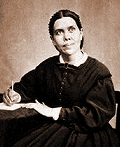|
In Lystra there was no Jewish synagogue, though there were a few Jews in
the place. The temple of Jupiter occupied
a conspicuous position there.
Paul and Barnabas appeared in the city together, teaching the doctrine of
Christ with great power and eloquence. The credulous people believed
them to be gods come down from Heaven. As the apostles gathered the
people about them, and explained their strange belief, the worshipers of
Jupiter sought to connect these doctrines, as far as they were able, with
their own superstitious faith.
|
It was a common belief among the ancients that the gods occasionally
visited the earth in the form of men. Such a belief with regard
to Jupiter, "the father of gods and men," would be natural in any rural district:
but nowhere should we be prepared to find the traces of it more than at
Lystra; for Lystra, as it appears from St. Luke's narrative,1 was under
the tutelage of Jupiter, and tutelary divinities were imagined to haunt
the cities under their protection, though elsewhere invisible. The temple
of Jupiter was a conspicuous
object in front of the city-gates:2 what
wonder if the citizens should be prone to believe that their "Jupiter,
which was before the city," would willingly visit his favorite people?
Again, the expeditions of Jupiter were usually represented as attended by
Mercury. He was the companion, the messenger, the servant of the
gods.3 Thus the notion of these two divinities appearing together in
Lycaonia is quite in conformity with what we know of the popular belief.
But their appearance in that particular district would be welcomed with
more than usual credulity. Those who are acquainted with the literature
of the Roman poets are familiar with a beautiful tradition of Jupiter and
Mercury visiting in human form these very regions4 in the interior of
Asia Minor. And it is not without a singular interest that we find one
of Ovid's stories re-appearing in the sacred pages of the Acts of the
Apostles. In this instance, as in so many others, the Scripture, in its
incidental descriptions of the Heathen world, presents "undesigned
coincidences" with the facts ascertained from Heathen memorials.
1 It is more likely that a temple than a
statue of Jupiter is alluded to. The temple of the tutelary divinity was outside the
walls at Perga (see p. 143) and at Ephesus, as we learn from the story in Herodotus
(i. 26), who tells us that in a time of danger the citizens put themselves under the
protection of Diana, by attaching her temple by a rope to the city wall.
2 Acts xiv. 13.
3 See the references in Smith's Dictionary of Classical Biography and Mythology
under "Hermes." We may remark here that we have always used the nearest Latin equivalents
for the Greek divinities, i. e. Jupiter, Mercury, Diana, Minerva, for Zeus, Hermes, Artemis, Athene.
4 See the story of Baucis and Philemon, Ovid. Met. viii. 611, &c. Even
if the Lycaonians were a Semitic tribe, it is not unnatural to suppose them familiar with Greek
mythology. An identification of classical and "barbarian" divinities had taken place
in innumerable instances, as in the case of the Tyrian Hercules and Paphian Venus.
|
The gods are come down to us in the likeness of men. (Acts 14:11)
Then the priest of Jupiter, which was before their city, brought
oxen and garlands unto the gates, and would have done sacrifice
with the people. (Acts 14:13)
|


